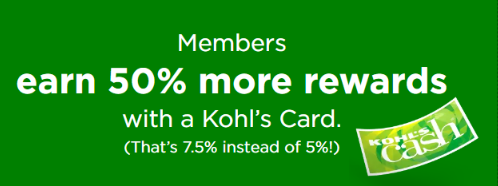
Ever skipped a listing because something just felt ‘off’? That feeling costs sellers money. Learn how trust signals stop buyers from bouncing and start them clicking ‘buy’ instead.
Building trust isn’t just a feel-good exercise. It’s at the core of getting buyers to click “Purchase” confidently. Whether you’re selling products or services online, trust signals play a human, psychological role in convincing your visitors to choose you over competitors. Let’s break down how they work and why they’re crucial for growing your sales.
What Are Trust Signals and Why Do They Matter?
Imagine walking into a new café for the first time. If the place is clean, bustling with happy customers, and the employee warmly greets you, you’d probably feel good about staying there. Trust signals in the online world serve a similar purpose.
A trust signal is any feature, badge, or indicator that reassures a potential buyer your brand, product, or service is credible and safe to engage with. These cues are particularly vital in e-commerce and B2B sales, where buyers can’t inspect products physically or interact face-to-face.
Definition and Examples of Trust Signals
Trust signals often come in different forms:
- Security badges like SSL certificates or PCI compliance logos tell users their payment data is safe.
- Customer testimonials and reviews show your business has delivered value to others.
- Client logos or partner mentions establish you as a player aligned with well-known brands.
- Industry awards or certifications communicate professionalism and expertise.
You’ve seen these everywhere – think of the “Secure Checkout” signs or five-star ratings on platforms like Amazon.
For more on how these signals impact buyer decisions, you can read this helpful article on Trust Signals in E-Commerce Conversion.
The Psychology Behind Trust Signals
Psychologically, a trust signal taps into our desire for safety and certainty. If buyers feel reassured, they’re more likely to complete their purchase. Think about it: why do people gravitate toward brands with glowing reviews? Because it reduces risk. Trust is all about eliminating fear, and these signals align perfectly with how the human brain craves security in decision-making.
Types of Trust Signals and Their Impact on Conversions
Each trust signal plays a unique role in easing buyer hesitation. Let’s take a closer look at their types and how they influence your bottom line.
Security and Verification Trust Signals
Online safety is paramount. SSL certificates, often seen in the browser as “https” or a padlock icon, protect sensitive data. Similarly, PCI compliance indicates your payment processing safeguards credit card info. When users see badges like “Verified by Visa” or “McAfee Secure,” it’s easier for them to trust your checkout process.
Social Proof as a Trust Signal
Social proof works because people trust what others say about your brand more than what you say. Featuring customer reviews, testimonials, and even user-generated content (like Instagram photos from happy buyers) can humanize your listings. A detailed testimonial speaks volumes, painting a picture of how your product met someone’s need.
For example, here’s a comprehensive guide about types of social proof that might inspire your own trust-building strategies: 7 Major Trust Indicators That Convert Online Shoppers.
Brand Authority and Recognition Trust Signals
If your product has been praised in the media, flaunt it. Logos of well-known publications or mentions of industry awards instill confidence. Similarly, listing partnerships or showcasing Fortune 500 companies as clients can create a sense of dependability.
Website Design and Usability Trust Signals
An intuitive and professional website instantly screams “legit.” Ever notice how cluttered or poorly designed sites make you leave right away? A clean, seamless layout coupled with easily accessible privacy policies or refund information creates a stress-free shopping experience. Simplicity is credibility.
Effective Placement and Use of Trust Signals
Even the best trust signals won’t work if your visitors never see them. Placement matters as much as the signals themselves.
Strategic Placement on Product Listings
The best spots for trust signals are near Call-to-Action buttons (like “Add to Cart”) or pricing information. For instance, displaying a “Free Shipping” badge right below product images reinforces positive expectations. On checkout pages, security badges can reduce dropout rates.
Avoiding Overuse of Trust Signals
Too many signals can distract or overwhelm your audience. Think of it like adding too much seasoning to a meal. Include only the most relevant ones, ensuring that every piece adds meaning and value to the user experience.
Testing and Optimizing for Conversion
Testing the placement of trust signals through A/B experiments is a practical way to optimize results. Monitor buyer behavior with tools like heatmaps or scroll tracking to see what works. Keep iterating for better results.
Learn more advanced strategies for trust placement on Ecommerce Trust Signals + Ways to Use Them.
 Photo by Kindel Media
Photo by Kindel Media
Building Long-Term Trust Beyond Signals
Trust signals are essential for first impressions, but long-term trust is about consistency and transparency.
Delivering Consistently on Promises
Trust grows when brands fulfill their commitments. If you promise quick shipping or hassle-free returns, deliver on it every single time. Buyers notice when brands stick to their word.
Handling Negative Feedback Transparently
Nobody’s perfect, and buyers understand that too. When negative reviews pop up, don’t panic; address them head-on. Apologizing sincerely and offering solutions can actually win people over in ways that perfection never could.
Maintaining a Positive Brand Reputation
Online reputation is a fragile thing. Monitoring what’s being said about your brand, engaging positively with your audience, and staying ethical in advertising are all essential for staying credible.
Conclusion
Trust signals are the unsung heroes of every high-converting listing or website. By reassuring buyers through badges, testimonials, clean visuals, and valuable partnerships, you build the foundation for effortless engagement and long-term loyalty. Integrating these strategies into your listings ensures they aren’t just browsed but chosen by confident buyers.
Start small—add those badges, share reviews, and clean up your site. These simple efforts can profoundly outperform overly complicated marketing tricks. Remember, trust isn’t just what you show; it’s what you repeatedly prove.



